Abstract
Engineering and microbiological tests indicated that a typical, commercial laminar airflow cabinet was not effective in providing either product protection or agent containment. The cabinet was modified and tested through a series of alternate configurations to establish a set of design criteria. A mock-up cabinet was developed from these design criteria. The mock-up unit was evaluated for efficiency in providing both product protection and agent containment. In these evaluations, challenge methods were developed to simulate normal, in-use laboratory operations. Controlled bacterial or viral aerosol challenges were used at higher than normal levels to provide stringent test conditions. Test results indicated that the mock-up unit was considerably better in preventing agent penetration (0.1 to 0.2 particles per 100 ft3 of air) than the commercial cabinet (5 to 6 particles per 100 ft3 of air) during product protection tests. Similarly, agent containment was considerably better in the new cabinet (particle escape of 2 to 3 per 100 ft3 of air at only one of the five test sites) than in the commercial cabinet (particle escape of 2 to 14 per 100 ft3 of air at three of the five test sites).
Full text
PDF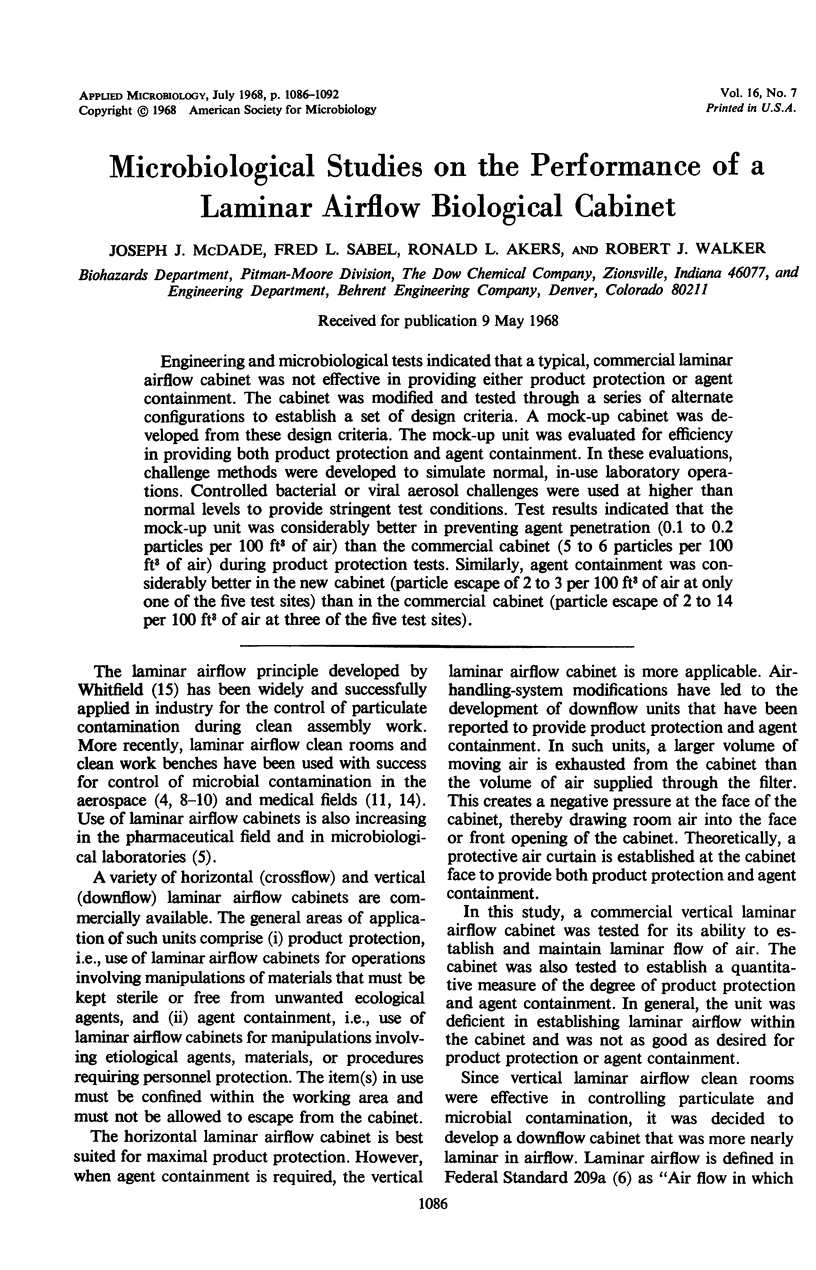
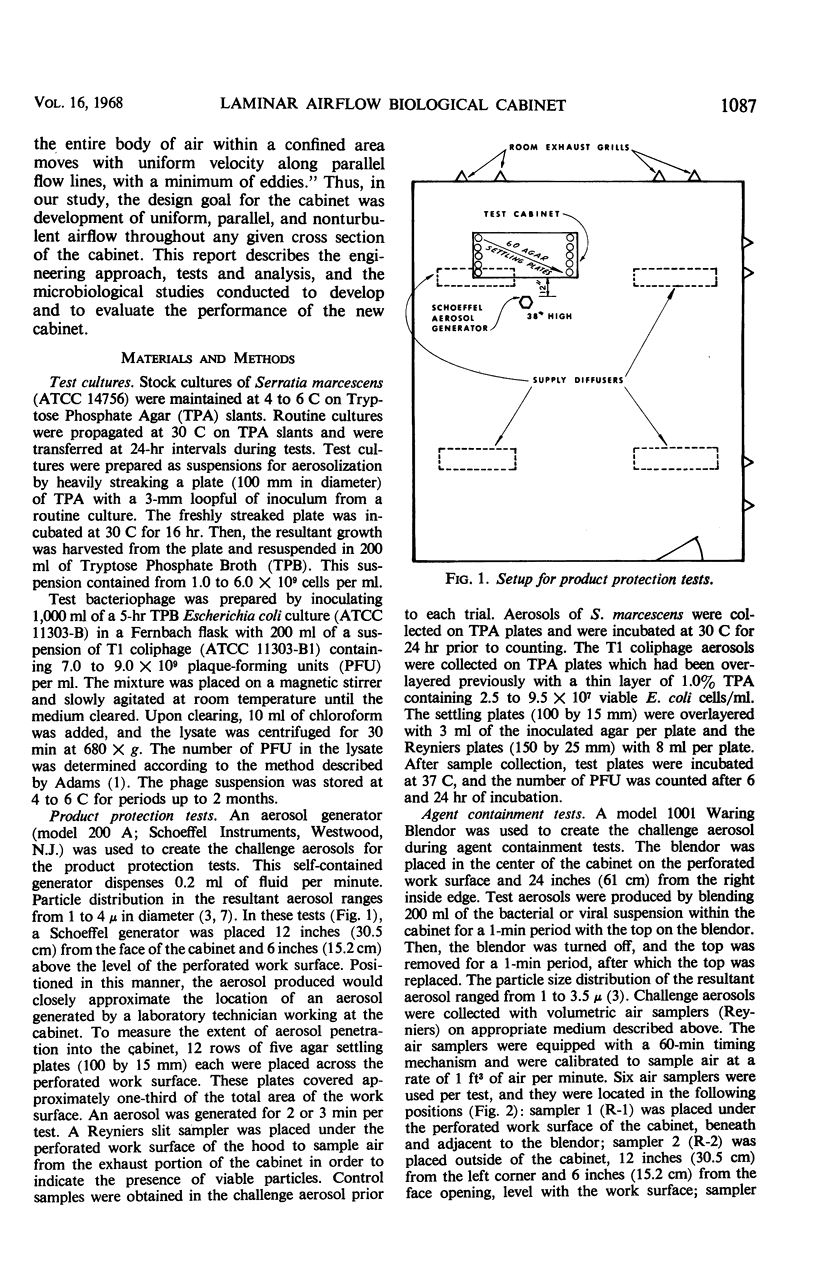
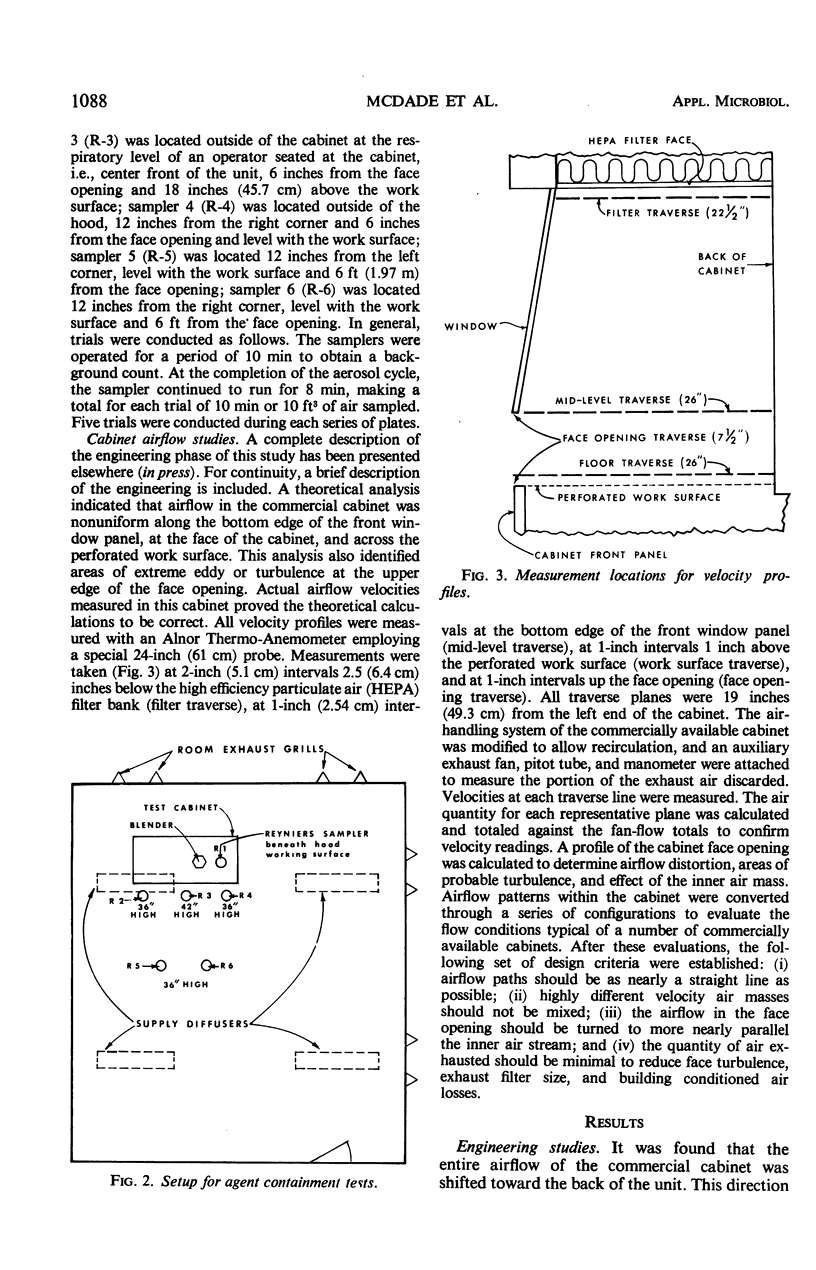
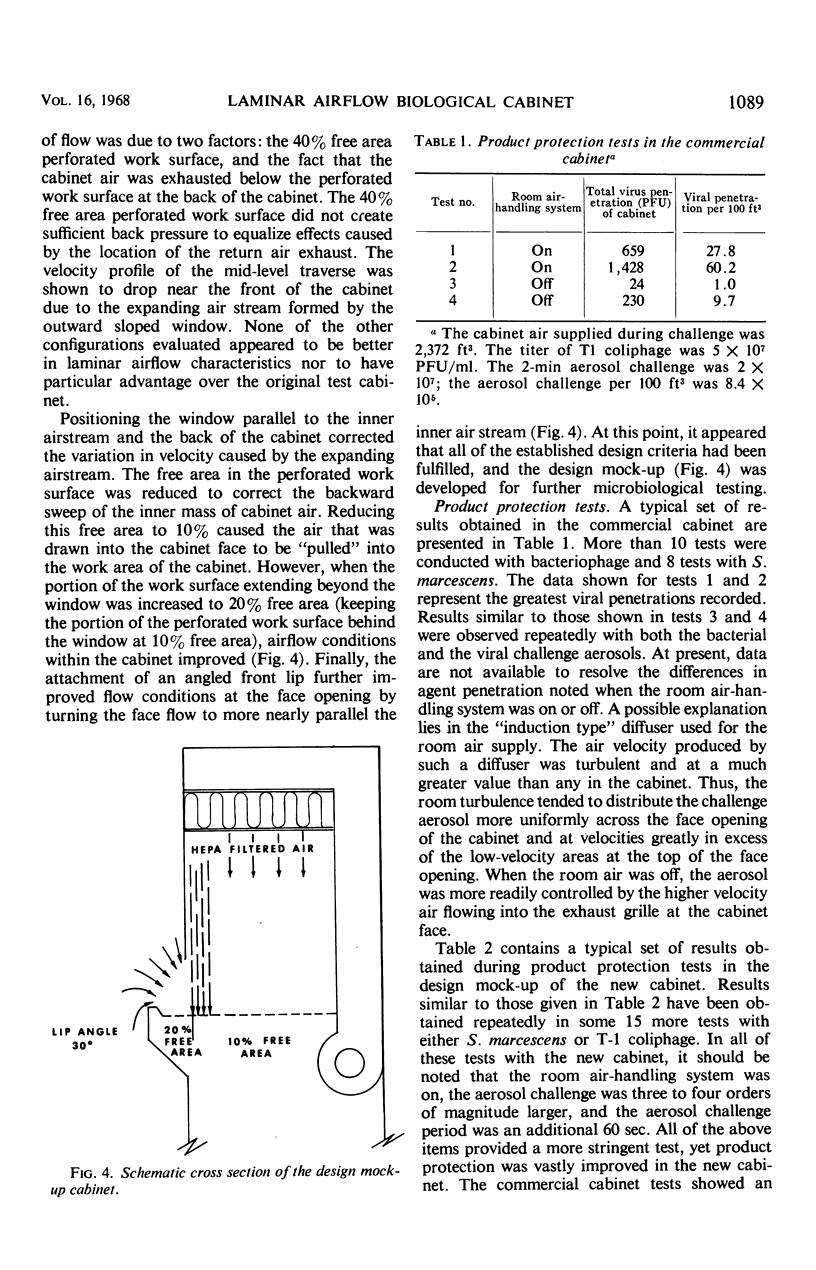
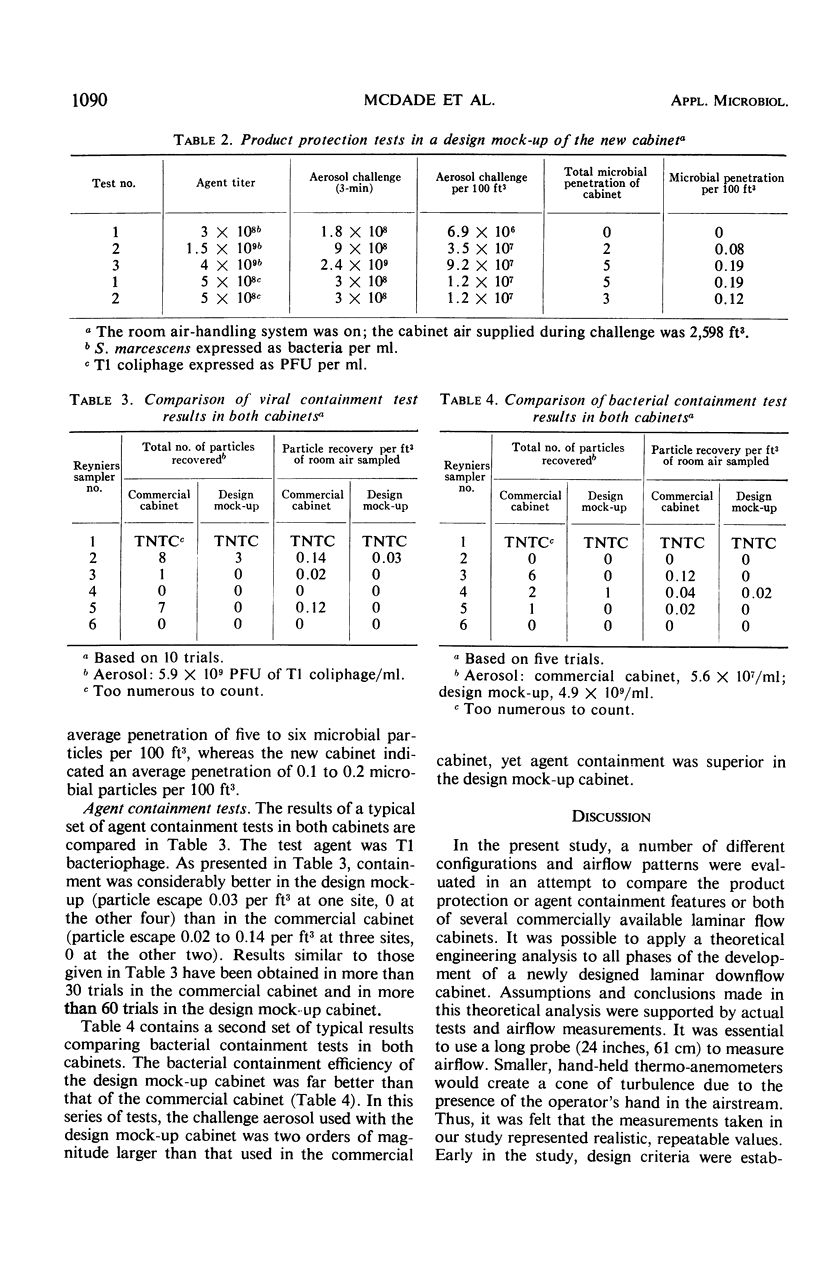
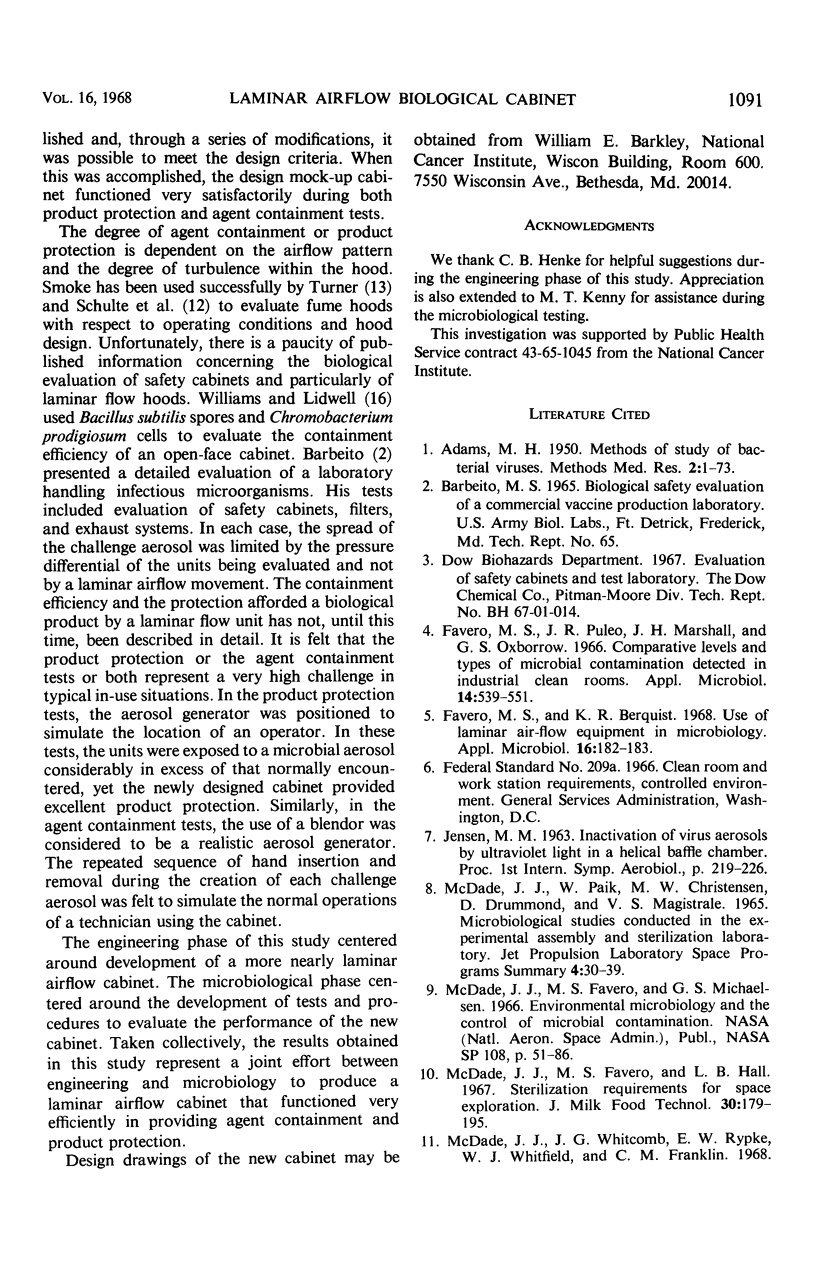
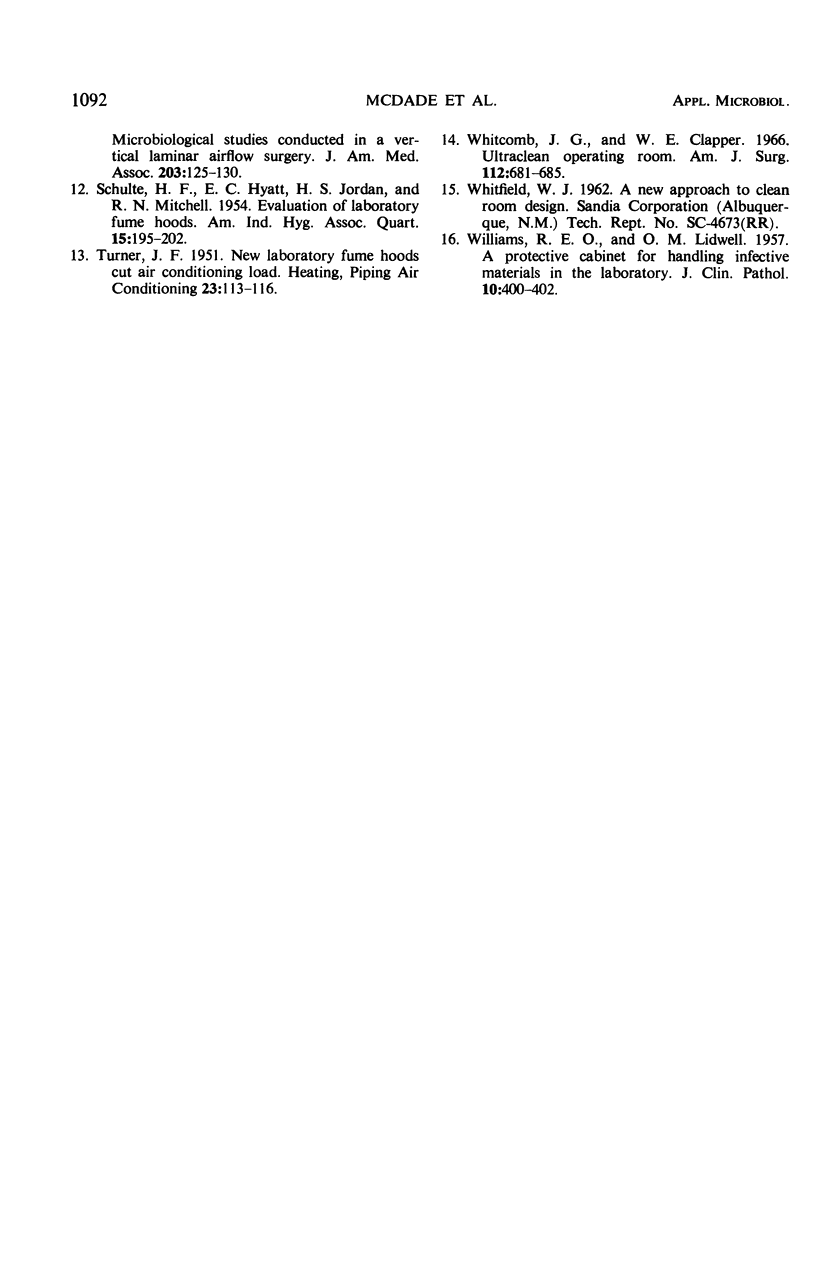
Selected References
These references are in PubMed. This may not be the complete list of references from this article.
- Favero M. S., Berquist K. R. Use of laminar air-flow equipment in microbiology. Appl Microbiol. 1968 Jan;16(1):182–183. doi: 10.1128/am.16.1.182-183.1968. [DOI] [PMC free article] [PubMed] [Google Scholar]
- Favero M. S., Puleo J. R., Marshall J. H., Oxborrow G. S. Comparative levels and types of microbial contamination detected in industrial clean rooms. Appl Microbiol. 1966 Jul;14(4):539–551. doi: 10.1128/am.14.4.539-551.1966. [DOI] [PMC free article] [PubMed] [Google Scholar]
- SCHULTE H. F., HYATT E. C., JORDAN H. S., MITCHELL R. N. Evaluation of laboratory fume hoods. Am Ind Hyg Assoc Q. 1954 Sep;15(3):195–202. doi: 10.1080/00968205409343986. [DOI] [PubMed] [Google Scholar]
- WILLIAMS R. E., LIDWELL O. M. A protective cabinet for handling infective material in the laboratory. J Clin Pathol. 1957 Nov;10(4):400–402. doi: 10.1136/jcp.10.4.400. [DOI] [PMC free article] [PubMed] [Google Scholar]
- Whitcomb J. G., Clapper W. E. Ultraclean operating room. Am J Surg. 1966 Nov;112(5):681–685. doi: 10.1016/0002-9610(66)90104-8. [DOI] [PubMed] [Google Scholar]


